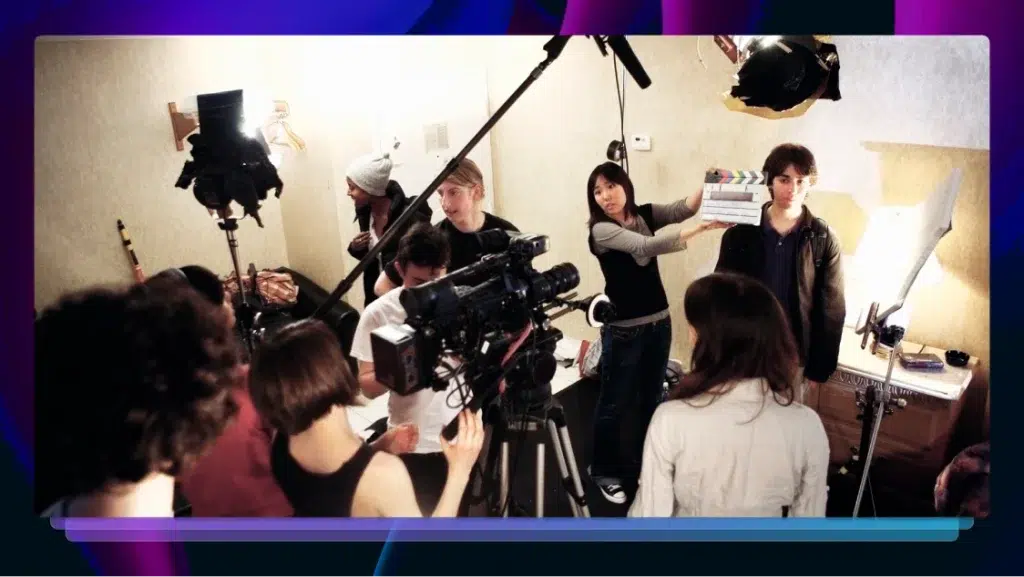5 Ways for Producers to Cut Their Cost-Per-Production-Hour & Save Resources
Learn how to cut your production costs by conducting a budget analysis and finding ways to reduce your cost-per-production-hour for your project.

As a producer, you know the one question clients ask the most is “how much will this project cost?”
It’s not an easy question to answer, because videos aren’t as simple as a price per minute. A 3-minute animated video might cost more than a 10-minute live-action video. The locations, the talent, the amount of editing—all of these factors vary from project to project.
But cost does have a direct effect on whether you, as the producer, will make money or lose it. Without a project plan in place, costs spiral and profits suffer.
You need to reduce production costs while maximizing your revenue. We’ve found five ways for you to do just that.
1. Conduct a budget analysis.
You made a budget. You shot your project. Now, at the end, it’s time to analyze how much money you spent and how well you spent it.
A budget analysis will help you determine how realistic your budget was. You’ll see whether or not you spent what you expected and whether budget improvements will be needed on future projects.
To conduct a budget analysis, you’ll need the most recent project budget, the final costs from that project, and the resulting revenue. Once you have this data, the goal is to compare your actual spending to the budget. Here are the steps for completing your analysis:
- Identify where you went over budget.
- Identify factors that affected the budget, such as staffing issues, unclear project plan, or scope creep.
- Verify whether revenue goals were met.
For your next project, use ongoing budget tracking to make sure that the inefficiencies you found (such as higher-than-expected location fees) are planned for. Ideally, analysis will ensure that your future budgets are accurate and you save money.
2. Simplify video production packages.
Large packages let you charge more, but they open you up to cost issues. In addition to features like shooting and postproduction work, your package might include premium services such as custom graphics and music. But when packages get complicated as you add services on the fly, it’s harder to track whether your return was worth the effort.
A more cost-effective approach is to use templates for each project package you offer. You’ll be able to plan for and anticipate costs much better.
Your template can look like this:
- Include basic features that are required for every project. Include features like audio recording, videographer, and crew.
- List popular services that vary, based on project type, and offer them as add-ons. Charge an extra fee for each add-on. Include features like animation, voiceovers, or licensed music.
- List premium add-on services that aren’t used frequently but are useful for larger projects. Include features like scriptwriting and social versions for easy sharing online.
Offer all clients the basic packages for a flat fee, and add on features à la carte based on clients’ unique needs. With this approach, you waste less money in the short term since you only offer features that clients need and use.
3. Limit last-minute changes.
Last-minute changes, such as adjustments to filming locations and scheduling, can make your projects last longer and cost more. To keep costs low, minimize the number of last-minute adjustments you take on. To do that, create a detailed production plan like this:
- Break your plan into three parts. Include preproduction, production, and postproduction tasks.
- Create line items for each part. For pre-production, include items like scriptwriting and storyboarding. For production, include a list of locations, the call sheet, the shotlist, and the schedule. For post-production, include items like editing and revisions.
- Include your project goals. Ensure that the plan is in line with your budget and will deliver on project goals. Both of these factors affect your revenue.
Ask clients (or production team leads) to sign off on the plan once it’s complete and before you start work. This is the point where changes can be made and budgets can be adjusted. If there are changes after the plan is approved, explain that the additional tasks will be completed but will cost extra.
4. Review pre-production activities.
Preproduction activities are key to getting your projects started on the right foot, but they can be expensive and time-consuming if not handled well. Tasks such as concept development and scriptwriting are important, but if they drag on for days or weeks, your projects can start off in the red.
Reduce the amount of time spent on time-consuming activities by incorporating apps and tools into your workflow; you’ll save time and money.
When your team meets—in-person or virtually—to discuss anything from production planning to set construction, record all of these conversations. Then, upload the audio files to a tool like Rev to transcribe everything.
Store transcripts in a central location, such as Google Drive or Dropbox, where they can be accessed by your team and your clients. Everyone involved in the project can refer back to these documents to confirm goals and vision instead of wasting time and guessing.
With Rev Enterprise, you can create custom automated workflows so that no one has to manually upload audio files. If you use Zoom to record team meetings, Rev lets you automatically transcribe audio. You’ll receive an email with a link to the transcript when it’s ready. Transcripts are ready in as little as 12 hours, so your projects don’t stall while you wait for files. Plus, you only pay $1 per audio minute, which helps keep your costs low.
Once you have your transcripts, you can review them internally via the team’s joint Rev account (before meeting with clients). Anyone on your team can add notes to the transcript or adjust the content, all in one place via the transcript editor. There’s no need to search through emails or handwritten notes to find information.
5. Analyze post-production activities.
Postproduction brings together all of the work you’ve done in preproduction and production. It’s where you visualize all of the ideas and concepts shared early on. But before post-production starts, you need to clearly outline what work will be included. If you find your team adding in special effects or graphic design that wasn’t previously agreed on, your costs will balloon.
Use the right tools to lower your costs and save time. Here are some examples:
- Rev: Use this transcription tool to lower the cost of video editing and subtitles.
- Hightail: Use this tool to increase the speed at which you receive client and team feedback. Feedback notes are stored in one central location for convenience.
- Adobe Premiere: Use this editing software to quickly edit footage.
- Shutterstock: Use this tool to add stock footage to your work.
Find tools that fit your budget, and offer different packages to meet your needs. As long as one of these packages meets your needs, it’s more likely to help keep your costs low. You’ll pay for only the services you need.
Learn as you go to shrink costs
From the start of your projects to the end, take some time throughout to learn from the experience. The more you know about your spending habits, the easier it becomes to lower your costs. You can eliminate some costs or funnel more funds to areas where you tend to go over budget.
Also, carefully plan each step of the production process in advance. Then, stick to the plan as much as possible so that costs stay low and profits grow. Continue to do budget analyses so that you’re always finding new ways to lower your costs. You’ll find that, over time, you spend more efficiently and your production costs are more predictable.

.webp)






